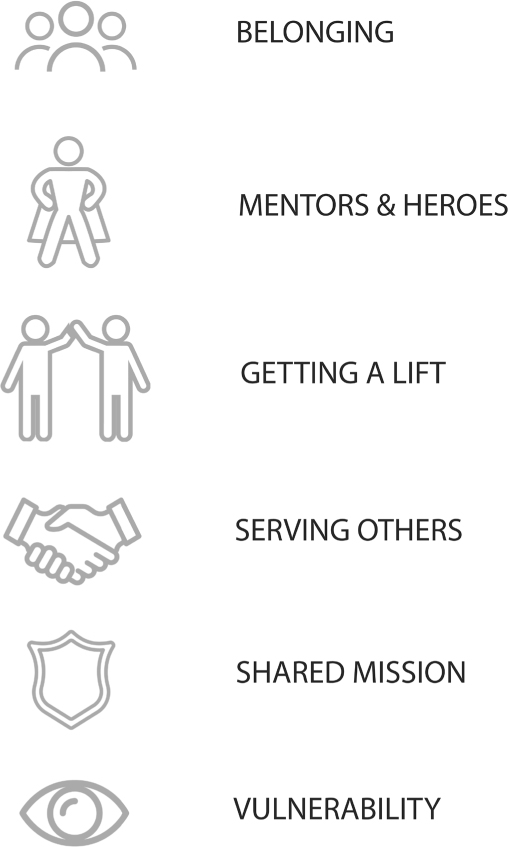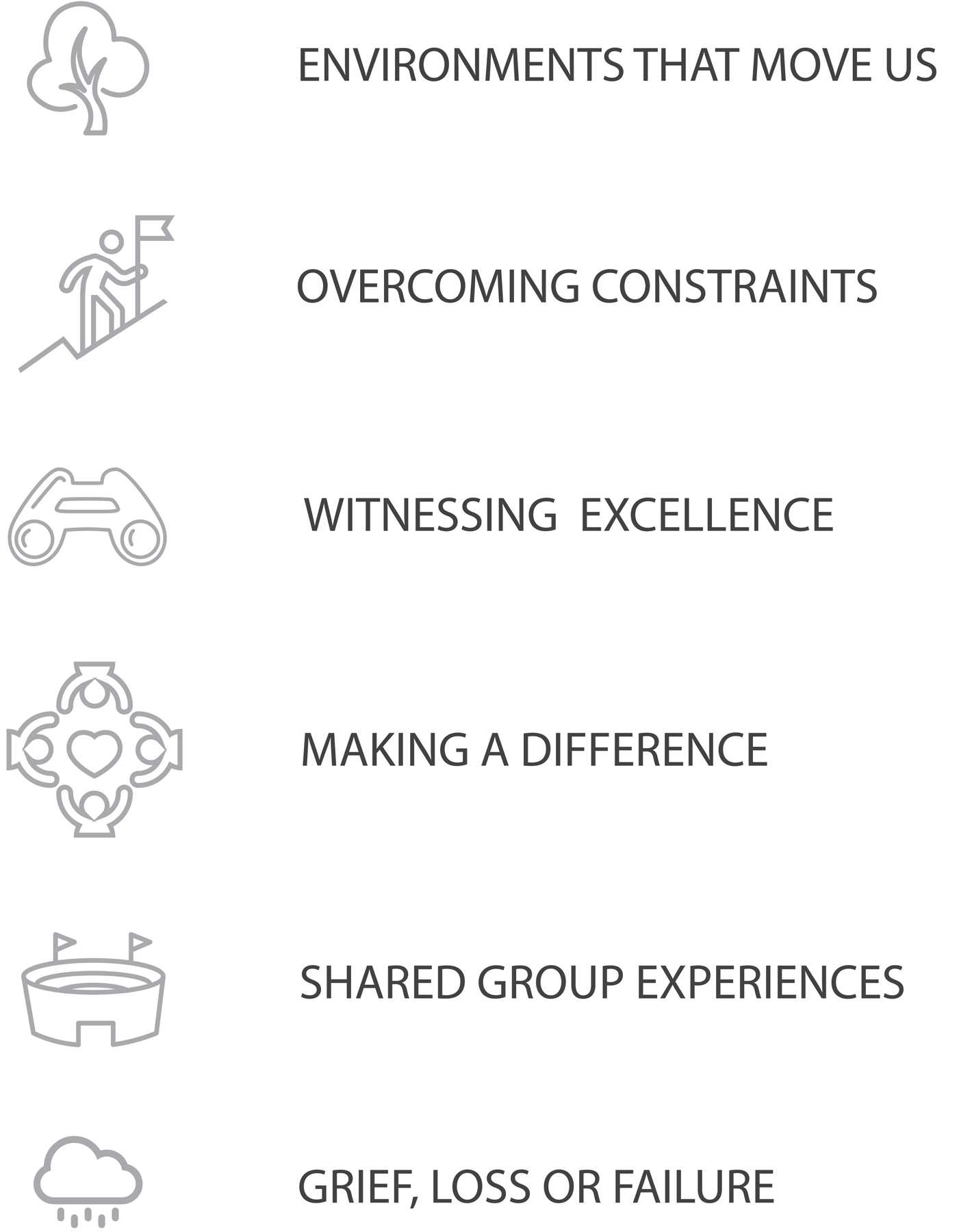PART II
SPARKING INSPIRATION
Often inspiration is thought of as an unexpected, sudden experience of transcendence—something that people long for and yet cannot create for themselves. In our conversations with clients and leaders, we heard again and again about individuals putting themselves in situations, mindsets, or conditions that made inspiration more likely to occur. We can, in fact, seek out inspiration and create it for ourselves and others.
In this section of the book we expand on this idea that there are engines that reliably spark inspiration. In the following three chapters, we describe and give examples of each of the eighteen engines we’ve discovered that you can use to proactively spark inspiration in yourself and in others. It’s important to note that these engines of inspiration might generate various positive emotions, such as contentment, happiness, serenity, joy, or excitement.1 These emotions are different from inspiration, and while they create a positive openness that is helpful, inspiration is distinct from each of these. As you work with the engines, remember that you are seeking that combination of greater possibility and invincibility that directs you to positive outcomes. How do you distinguish between happy and inspired? You are feeling inspired when you see your realm of what is possible expand and your confidence in your own invincibility increase.
“I get inspiration a lot of different ways. I get inspiration when I hear an exciting talk that challenges me to think differently about something or helps me think about the possibilities of something that I might be able to have an impact on that I never dreamt I could. I get inspiration when I see patients and doctors interacting and families grateful for what our physicians and providers have done for them and how that’s impacted their lives. It’s an inspiration to see when people overcome huge obstacles and many things that were put in their way, and they persevered and achieved their goals despite difficulties. When I’m inspired, I feel like I sit taller. I stand taller. I feel my body engaging more with people around me or whatever the situation is, as opposed to just sitting back and being passive.”
—Cliff Bogue, MD, Chair of Pediatrics, Yale School of Medicine and Chief Medical Officer, Yale New Haven Children’s Hospital
Although all the engines are effective and readily available, there are differences among them and how they work. Some are more potent than others, some more idiosyncratic or situation dependent. Some are easier to generate than others, more accessible, feel more under our control. Some inspire toward very specific actions, while others generate a more abstract inspiration that can be directed in various ways. The way they inspire people will be different, depending on the person, the situation, and the experience.
These differences in how the engines activate are opportunities. As you read through them, pay attention to which resonate more or less for you. Recognize which have already played an important role in your life and work. For example, as authors, we learned the following during the process of researching and writing about the engines:
• Allison discovered how potent and important unstructured time and new environments are to sparking her inspiration, as they lead to new perspectives and ideas. She used to think of taking time away as self-indulgent. Now, knowing that these are important inspiration engines empowers her to prioritize and activate them when needed.
• Sandy recognized the special environments in her life, specifically California redwood groves and her classrooms in Kentucky where she teaches. She realized that they have always been her inspiration homes. Now, instead of just enjoying these places when she finds herself in them, she travels to them regularly, engineering time in the spaces with intention to find and cultivate inspiration.
• Through her master’s program in applied positive psychology, Jen has reaffirmed that “the positive psychology of style” is important and lights her up. She used to think of everyday dressing as a strictly personal avenue of expression but has now integrated how people dress into her work with clients. She shares her research and methods to coach clients on how dressing enables powerful, positive mindsets that translates into a stronger presence and more influence.
Knowing the inspiration engines that are most potent for you allows you to utilize and activate them more often. The engines we don’t use as naturally or as often are also potential opportunities to seek out.
The eighteen engines fall into three broad categories. We organize the following three chapters according to these categories of inspiration:
Personal engines include sources such as hearing or reading information that leads to a new idea or perspective or giving voice to your values and purpose. This might have happened for you after hearing a news story on the radio or reading about a new business and having your curiosity piqued. That curiosity might lead to brainstorming and exploration that results in inspired ideas.

Chapter 4—Sparked by OTHERS:
Relationships are another major category of inspiration engines and include other people in your life, such as mentors and heroes, or people you don’t necessarily know but who you come across and discover are in need. People who push you to see things in a new light, or who fuel your confidence and your ability to be your best, can be inspiration engines, just as people who question your skills or who try and squelch your ambitions may fuel your fire.

Chapter 5—Sparked by SITUATIONS:
Situations or circumstances that inspire include physical places or environments or shared collective experiences, such as a concert or rally. We all have places that are special to us, that take us to a different state of mind and transcend the everyday. Similarly, events, situations, or opportunities can also spark inspiration and reflection, whether it’s participating in a protest, attending a wedding or funeral, or listening to a TED Talk.

As you read the three chapters in this section of the book, we encourage you to actively engage with each engine you discover: personalize it, take notes, put your own spin on one, and chart your list for which ones you want to pursue first.